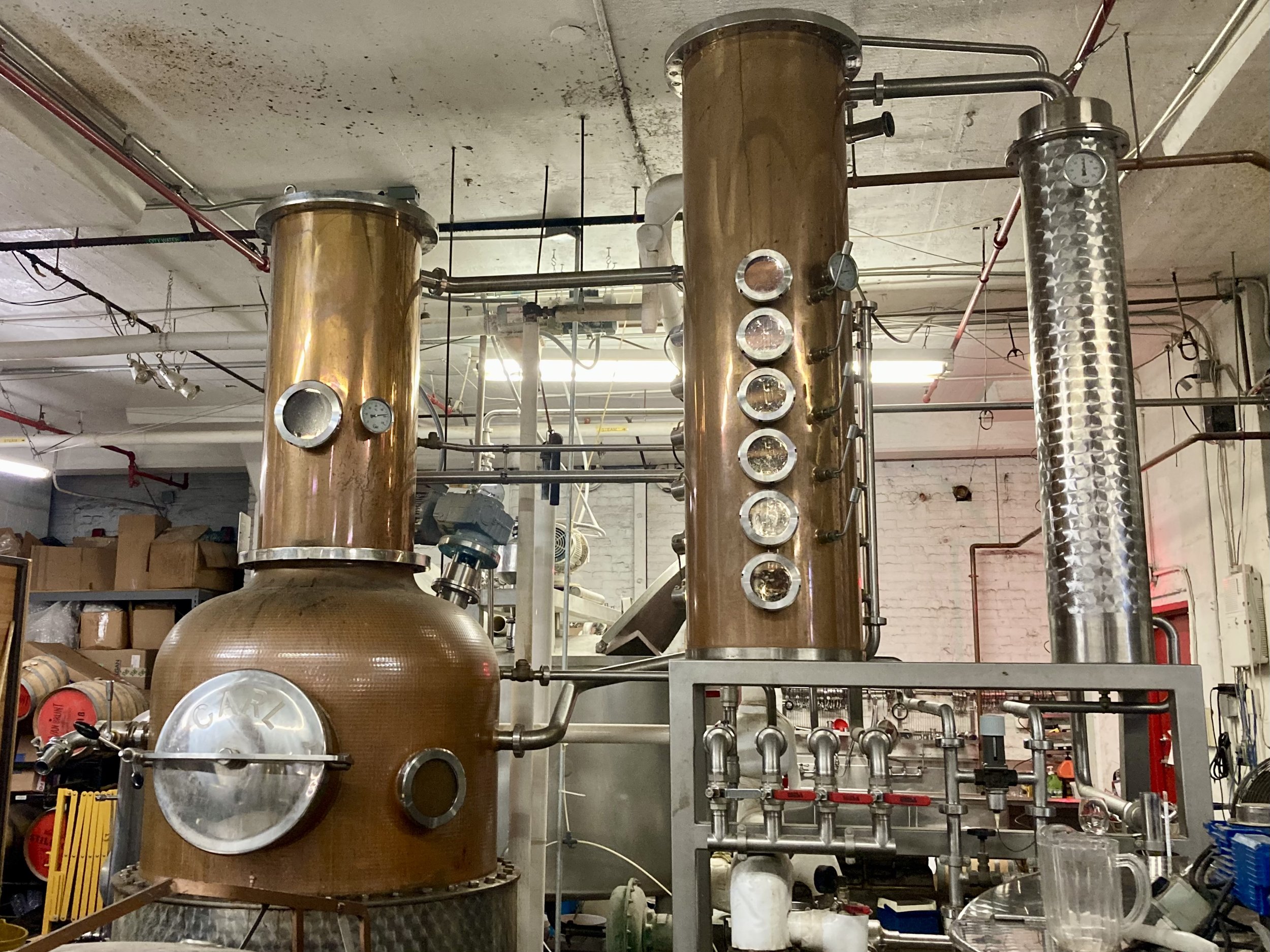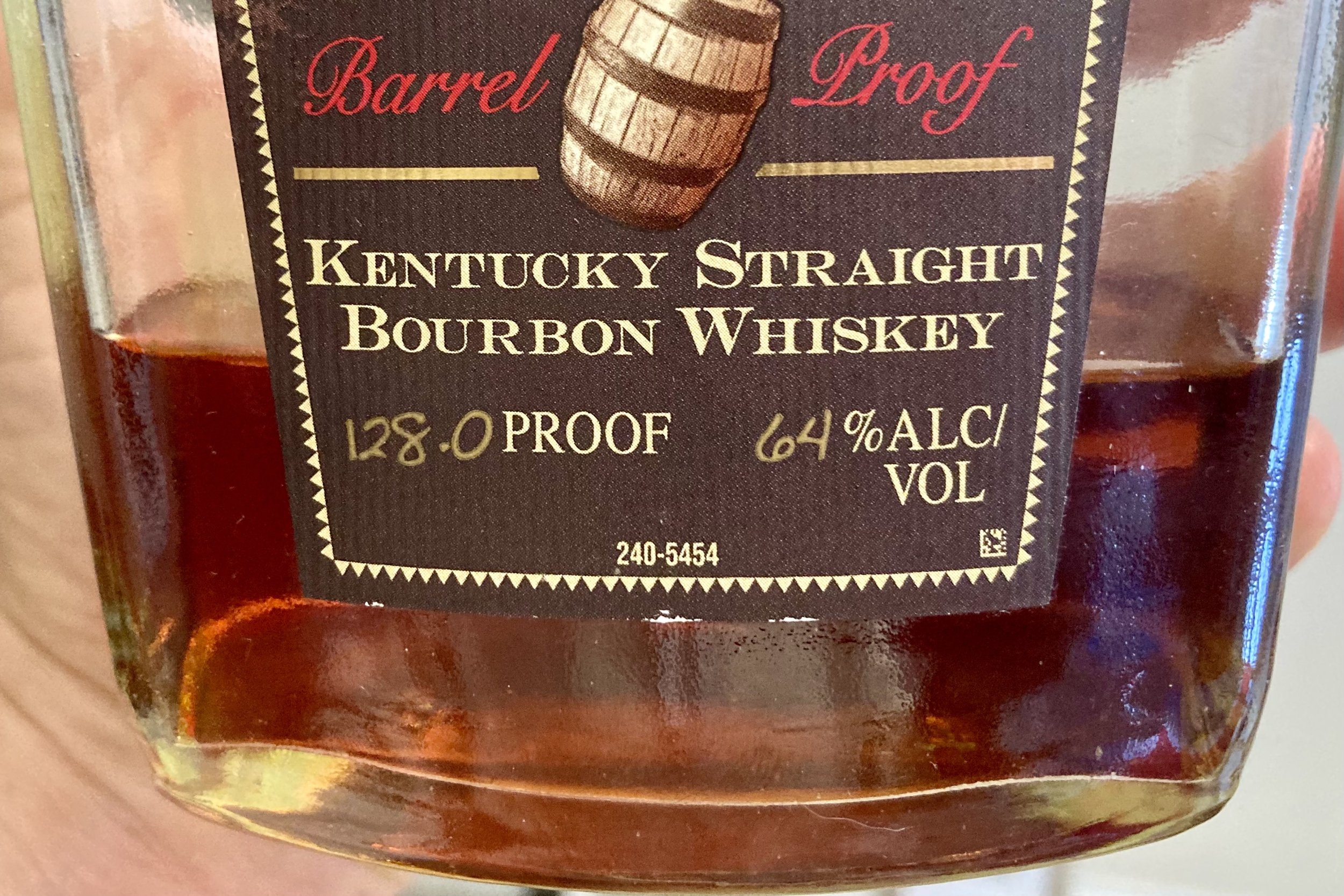Boozy Basics
Distilled Spirits, Distilled Down
My parents have done every tasting and course that I’ve offered (they’re very supportive). But after chatting with them and essentially giving them a mini pop quiz the other day, I realized that they really needed a refresher on the whiskey basics. In fact, they needed a refresher on the basics of all distilled spirits. We get into so much detail about various whiskey aspects during the tastings, but I don’t always remember to zoom back out. I mean, alllll the way out. So this is for not only my parents, but anyone else who feels like they need a refresher.
When you walk into a liquor store, you see an abundance of alcoholic beverages. There’s wine, beer, whiskey, rum, vodka, etc. all separated by category. If you’re like me, you’ll usually stroll right over to the section you know (cough cough whiskey) and typically just stay in the aisle without considering that there might be something I’d like in another part of the store. But that’s like going to a farmers market and only looking at the berries. There’s lots of other tasty produce.
Alcoholic beverages are typically divided into three categories: beer, wine and spirits. We’re going to stick to spirits today, but in general beer and wine are fermented from cereal grains and grapes (or other fruits), respectively. Their alcohol content typically sits under 20% ABV. Spirits (or liquor) are distilled from beer or wine (essentially), meaning they have a much higher ethanol concentration than what’s achievable during fermentation. In fact, spirits must have an alcohol content of 40% ABV minimum, for the most part.
There are a number of different classes of spirits, but I’m going to stick with the major categories that you’d see in your liquor store: whiskey, rum, brandy, mezcal and tequila, vodka, gin and liqueur. I know I just listed 7 categories and that might seem daunting, but just stick with me. I’ll generalize those based on their TTB (the regulators of alcoholic beverages in the US) definitions and give you the main distinguishers (in italics) to remember. So buckle in.
Whiskey: Distilled from fermented grains (like corn, rye, wheat and barley) to < 95% ABV
Rum: Distilled from fermented sugar cane juice, syrup, molasses or other sugar cane byproducts to < 95% ABV
Brandy: Distilled from fermented juice, mash or fruit wine or from its residue to < 95% ABV
Mezcal and Tequila: Distilled in Mexico from fermented agave in compliance with the laws and regulations of the Mexican Government. Both mezcal and tequila must be produced in designated regions of Mexico. Tequila must also be produced from the blue agave plant.
Vodka: Distilled from any material to ≥ 95% ABV
Gin: Spirits with a main characteristic flavor derived from juniper berries
Liqueur: Flavored and sweetened (with ≥ 2.5 wt% sugar, dextrose and/or levulose) spirits and must be bottled at ≥ 23% ABV (NOTE: all the other spirits I listed must be bottled at ≥ 40% ABV)
You can see that whiskey, rum and brandy cannot be distilled to anything greater than 95% ABV. This is done to leave some characteristics from the fermentation in the final product. They should taste like they’ve come from grains, sugar cane and fruits, respectively.
Vodka on the other hand must be distilled above 95% ABV to produce a flavorless spirit.
Gin and Liqueur are flavorful, but have flavor added into the spirit. The flavors that you taste aren't derived through the fermented materials or maturation in wood casks like they are for other spirits. This means they can be produced from any spirit, but are typically produced from vodka, aka neutral grain spirit.
Mezcal and Tequila are unique as their regulations are controlled by Mexico and are specific to certain regions within Mexico. However, “agave spirit” is a new category of spirit that has recently been approved by the TTB and does not have to be produced in Mexico. As the name suggests, it must be distilled from mostly fermented agave (≥ 51%). Keep in mind, this has not become mainstream enough for liquor stores to change the “Tequila” section to “Agave Spirits”.
Now that you understand the basic definitions of these categories, you’re probably wondering, “okay, but what do these spirits taste like?” I will do my best to generalize the flavor profiles of these spirits, but please keep in mind I’m doing this for the sake of simplicity. Each category has a wide breadth of flavors and I really hate grouping them together. It’s the same as putting all candy in one category and generalizing the flavors. I’m going to make so many people cringe (myself included) by doing this, but here goes nothing! And I’m not including things like flavored vodka, flavored whiskey or spiced rum. Those all have flavors added into them that make what they taste like straight forward.
Take Liqueurs for instance, they are easy because they’ll taste like whatever they’re flavored with. For example, Mr Black Cold Brew coffee liqueur tastes like coffee and Cointreau (orange liqueur) tastes like oranges. I bring you these examples straight from my bar cart.
Vodka is also easy, it tastes like nothing. Or at least it should have no taste, but there can be subtle variations in vodka… or so I hear.
Gin will have varying flavors from the different botanicals used like citrus, herbs and spices, however juniper berries will give gin its notorious piney flavor.
Tequila will have sweet, fruity, earthy and herbaceous flavors and will take on some caramel, vanilla, spicy and oaky notes when aged. Mezcal is typically not aged, but will tend to be on the earthier side of the spectrum compared to tequila. The flavors can range anywhere from fresh and citrus to smoky and vegetal. Agave spirits are all over the place on the flavor wheel and depend entirely on the mezcalero/a and the agave species they use. I’ve had some crazy tasting agave spirits that have funky, cheesy notes. Those ones are so interesting! But generally speaking, they have earthy flavors similar to those found in mezcals.
Whiskey flavors vary a lot depending on what type of whiskey it is. Scotch and Bourbon for instance couldn’t be more different, but within them you can find floral, caramel, butterscotch, cinnamon, honey, vanilla, citrus and oak notes. A lot of these flavors come from being matured in oak casks. Some whiskies can be smoky and if so, are usually labeled as “peated”. American whiskeys tend to have more oaky flavors, whereas whiskeys from other countries will have lighter (fruity and floral) notes.
Rums that have been aged can have flavors similar to whiskey. Most people think that rums are just sweet and taste like molasses, and a lot are, but aged rums can have delicious spicy, fruit, oaky and vanilla flavors. Both unaged and aged rums can also be very funky and will taste like over-ripened or even rotten fruits. And some can taste very grassy.
Brandy can also have flavors similar to whiskey such as vanilla, caramel, oak and spice with a sweeter, fruit-forward edge. Unaged brandy, however, will have flavors related to the fruit it was fermented from. Brandy can be derived from any fruit, but is typically distilled wine (grapes) and includes Cognac and Armagnac. “Rancio” is often a term tossed out by aficionados when describing really old brandies (and some fortified wines). It’s an elusive descriptor that I believe to mean a sweet, salty, earthy, funky, bitter nut flavor.














